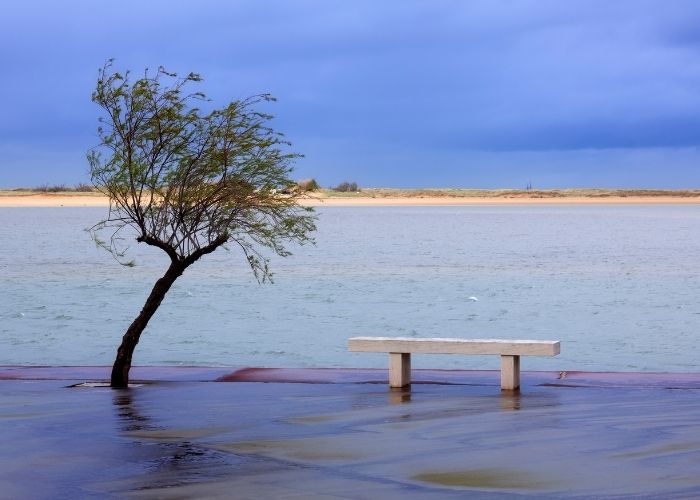WEATHER – After the mercury rises considerably until Friday, people who have had enough of the heat in Spain can breathe a sigh of relief afterward. A ‘polar sneeze’ (estornudo polar) will then disrupt the weather.
This polar sneeze is the result of an Atlantic front accompanied by cold air of Arctic origin, according to Meteored. The term sounds more intense than it is because it won’t get really cold. However, meteored reports we can expect temperatures up to 40 degrees in the interior of Andalucia in the Guadalquivir delta. This is then followed by a decline in most of the peninsula. Winds will be cool in some areas of Spain, and this will result in a temperature drop of 6-8 degrees.
Moderate showers
The first week of August started with generally moderate showers in Galicia, other regions of the Cantabrian coast, and northern Catalonia. On Wednesday, according to the observatory in Cantabria, more than 40 liters per square meter fell in specific places in that region within 24 hours.
In the rest of the Iberian Peninsula, blue skies with hardly any clouds dominated. What was striking was the contrast between the northern regions and the rest of the country.
Despite the heat and that it may have come across differently, maximum temperatures have not been extremely high for the time of year. Not even in the southern provinces of the country. Yesterday, however, the mercury reached 39ºC in Molina de Segura and 35ºC was also slightly exceeded in several Andalucian provinces and in parts of Extremadura and western Castilla La Mancha.
Until Saturday, daytime temperatures will increase in almost all of Spain, with maximums around 40 degrees around the Guadalquivir basin in Andalucia. In the northern half, the minimum temperatures drop due to a westerly wind from the Cantabrian Sea and the Atlantic Ocean.
Atlantic front gives a bit of release
An Atlantic front will then reverse the weather. On Saturday, a front will move into the northwest of the peninsula, then expand to the east. In addition to Galicia, the Cantabrian regions, and the Pyrenees, showers can also occur in other parts of Catalonia. In the north of the Canary Islands, there is a chance of light rain. In other regions, the sun continues to dominate.
The contrast between the northern third and the rest of Spain will be striking. Maximum temperatures will drop in the interior of the peninsula and rise in the Mediterranean regions. However, Murcia will have to deal with the highest temperatures in Spain, around 40 degrees. That is why there is an orange weather alert for the Vega del Segura on Friday and Saturday. Strong westerly winds will continue to prevail in the Strait of Gibraltar and along the Mediterranean coast.
Risk of forest fires
This Saturday the westerly wind will cause high temperatures in the southeast of the peninsula and very low humidity. As a result, the risk of forest fires becomes extreme. Little will change on Sunday when it comes to clouds and rain. For another day, the shores of the Cantabrian Sea, the Pyrenees, and the north of the Canary Islands will be cloudy at times with a chance of light rain. In the morning, clouds and clearings will also alternate on the coast of the Valencia region.
Temperatures will drop in the Mediterranean and rise slightly on the Atlantic side. It will probably not exceed 35 ºC in any provincial capital. The wind blows from the east in the eastern half, from the north in Ampurdán and on the Balearic Islands, and trade winds on the Canary Islands.


